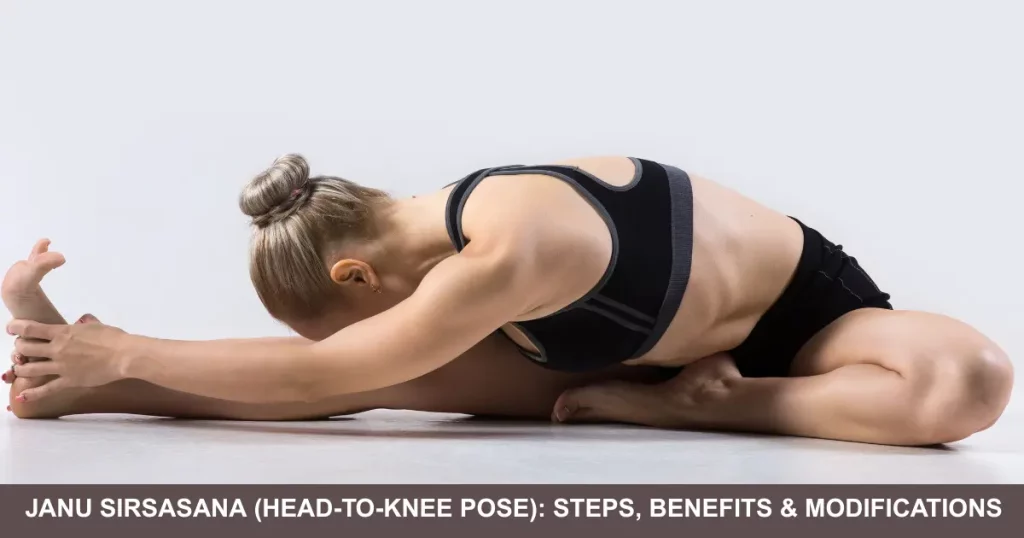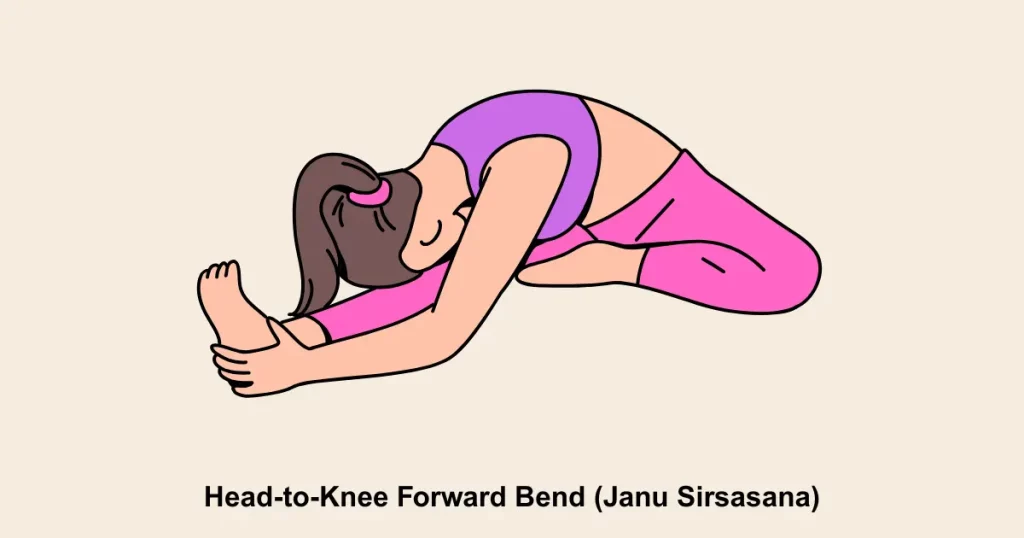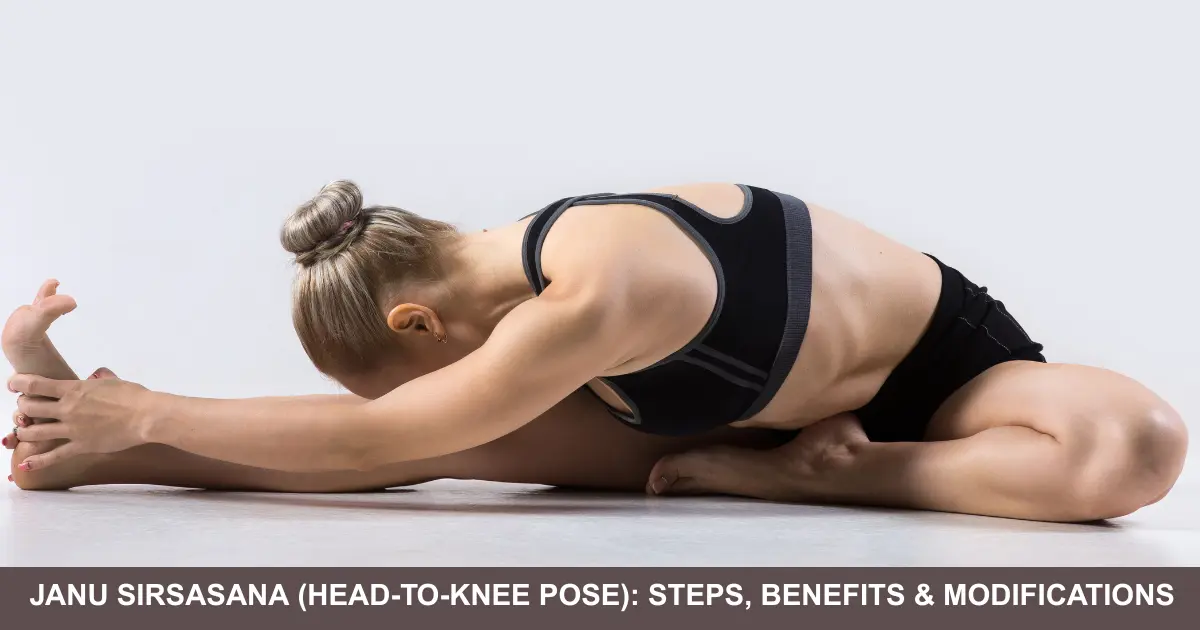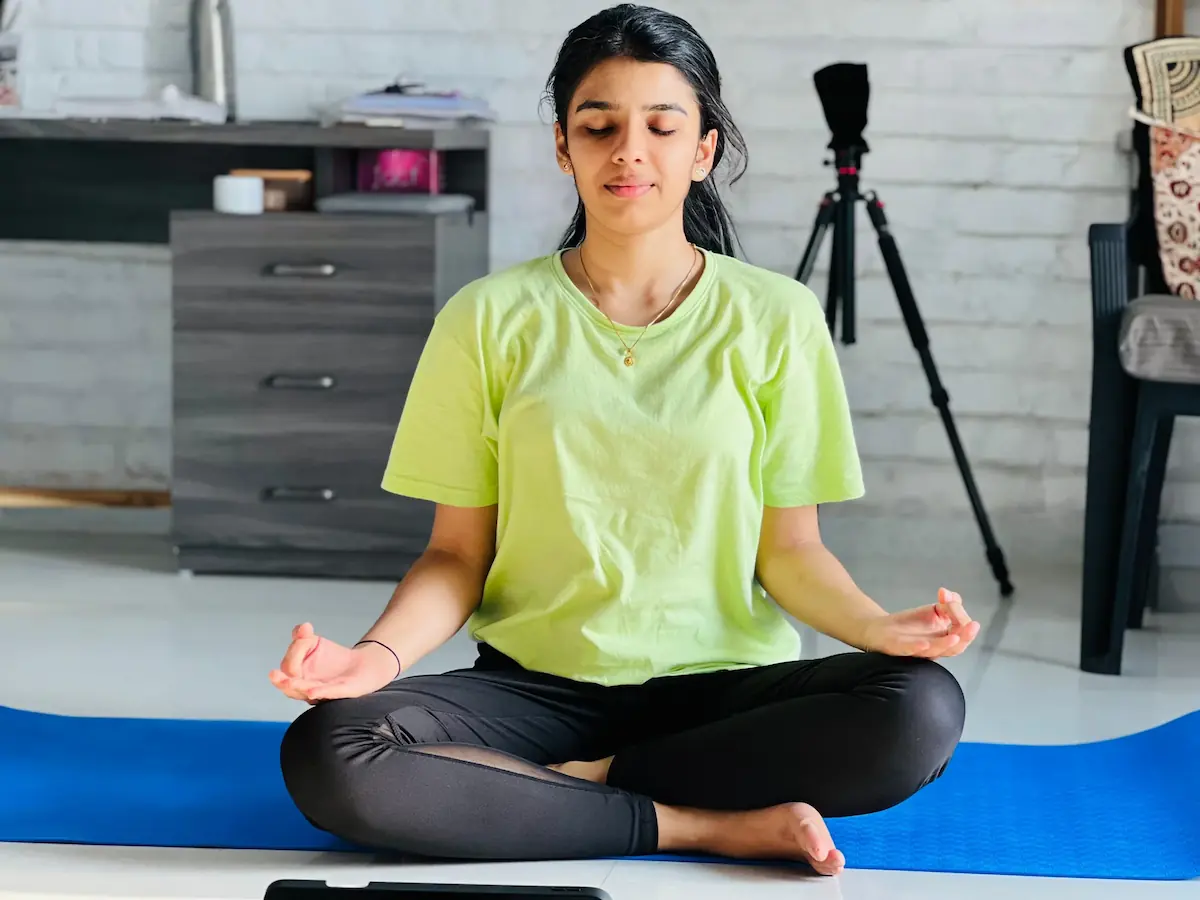What Is Janu Sirsasana?
Janu Sirsasana (जानु शीर्षासन), or Head-to-Knee Forward Bend, is a seated yoga pose that stretches the hamstrings, calms the mind, and promotes introspection. It’s often part of a cool-down sequence or included in calming morning or evening routines.
Who Can Practice This Pose & When?
Who:
- Beginners to advanced yoga practitioners
- People with mild back tension, digestive issues, or mental fatigue
- Individuals seeking flexibility and calmness
Best Time:
- Morning (to awaken muscles) or
- Evening (to relax before bed)
Always on an empty or light stomach.

How to Do Janu Sirsasana – Step-by-Step Guide
Step 1: Prepare Your Seat
- Sit on the floor with legs stretched out straight (Dandasana).
- Keep the spine tall and shoulders relaxed.
Step 2: Bend One Knee
- Fold your right knee and bring the sole of the foot to rest against your inner left thigh.
- Let the right knee fall outward comfortably.
Step 3: Inhale – Lengthen the Spine
- As you breathe in, raise your arms overhead and feel the spine grow tall.
Step 4: Exhale – Fold Forward
- Hinge from the hips, not the back.
- Fold over the left leg, keeping the spine long.
- Reach toward your left foot with both hands (use a strap if needed).
Step 5: Stay & Breathe
- Hold the pose for 5–10 deep breaths.
- Keep shoulders soft and avoid straining the neck.
Step 6: Return & Switch Sides
- Inhale to slowly rise back up.
- Repeat on the opposite side.
Breathing Cues
- Inhale to lengthen the spine.
- Exhale to deepen the fold gently.
- Maintain calm, rhythmic breathing throughout.

Common Mistakes to Avoid
- Rounding the back excessively
- Pulling hard on the foot (which can strain your lower back)
- Letting the bent knee lift off the floor
- Forgetting to breathe deeply and steadily
Modifications & Props
- Tight Hamstrings?
Sit on a folded blanket to tilt the pelvis forward. - Can’t reach the foot?
Use a yoga strap around the extended foot and gently pull with both hands. - Knee Discomfort?
Place a block or cushion under the bent knee for support. - Pregnant or Lower Back Pain?
Keep the spine upright or avoid deep forward folds. Always consult your doctor.
Benefits of Janu Sirsasana
- Improves Flexibility – Especially in hamstrings, spine, and hips.
- Aids Digestion – Gentle pressure on abdominal organs boosts gut health.
- Reduces Anxiety – Forward bends calm the nervous system and quiet the mind.
- Stimulates Liver & Kidneys – Enhancing detoxification and internal balance.
Practice Plan
- Beginner: Hold for 3-5 breaths each side, 1-2 rounds daily.
- Intermediate/Advanced: Hold for 10-15 breaths, focusing on deeper awareness and breathwork.
- Great for cooling down after standing poses or intense practice.
Frequently Asked Questions (FAQs)
Q1: Can beginners do Janu Sirsasana?
Yes! Just use props like a strap or blanket and focus on alignment rather than depth.
Q2: Is it safe during pregnancy?
Generally not recommended during pregnancy especially in later stages. Always consult a healthcare provider.
Q3: How often should I practice this pose?
3-5 times a week is ideal to see improvement in flexibility and mental calmness.
Q4: Can this pose help with stress?
Absolutely. It’s a calming forward fold that soothes the nervous system and supports mental clarity
Final Thoughts
Janu Sirsasana is not just a stretch it’s a deeply introspective and calming experience. With daily practice, this simple yet powerful pose can help you become more flexible, grounded, and mentally focused. Whether you’re a complete beginner or a seasoned yogi, there’s always room to explore its subtle layers.
🧺 Tip: End your practice with a few minutes in Shavasana to absorb the benefits.
So unroll your mat, find a quiet corner, and give yourself the gift of this serene practice. Your mind and body will thank you.

